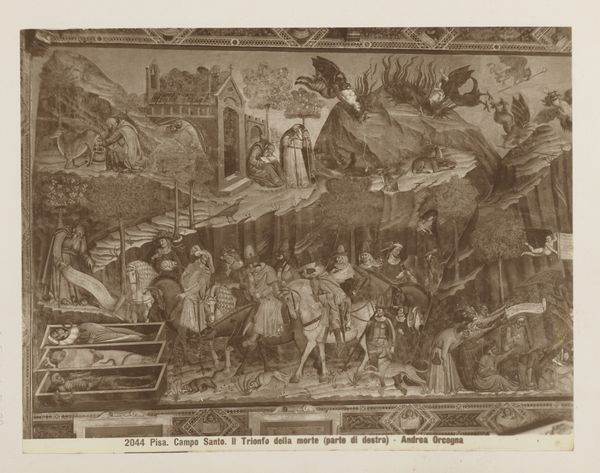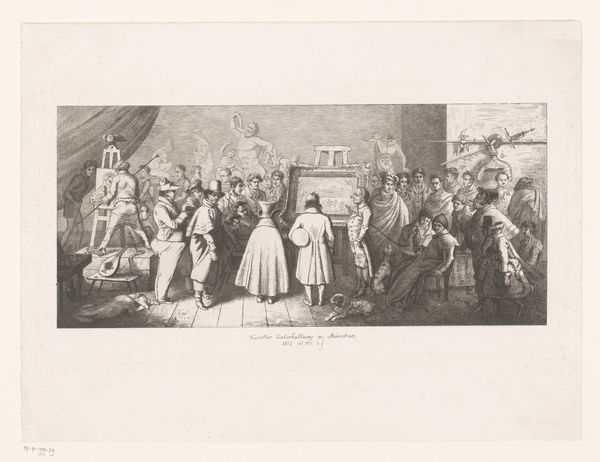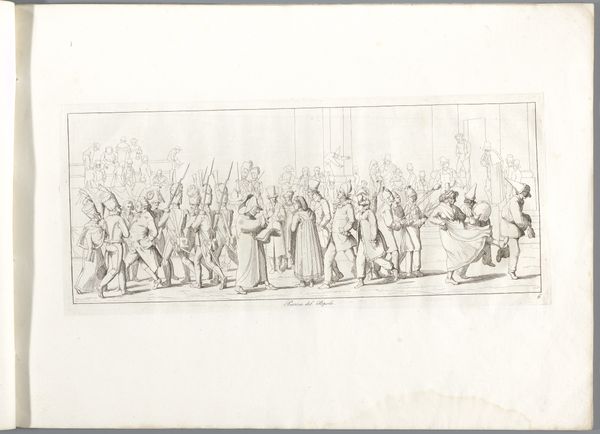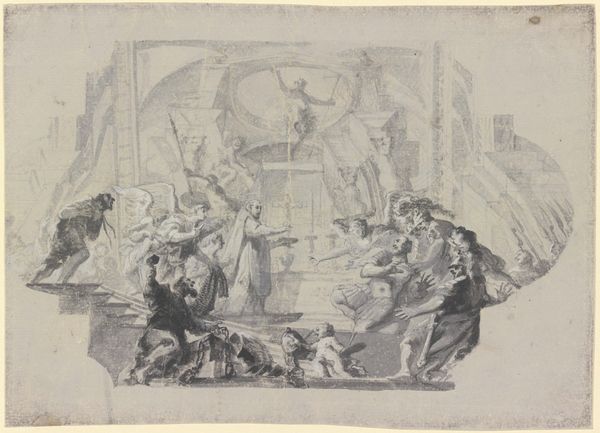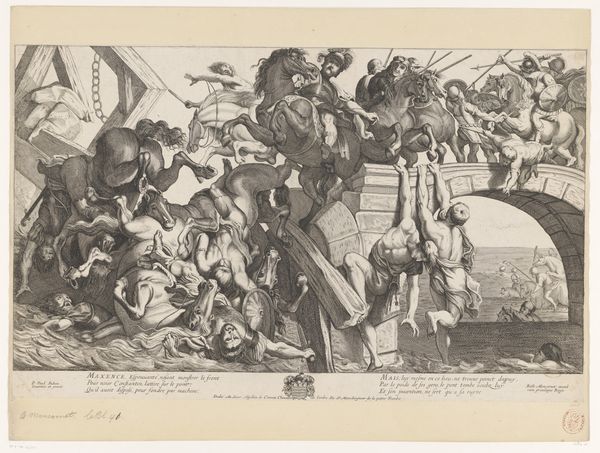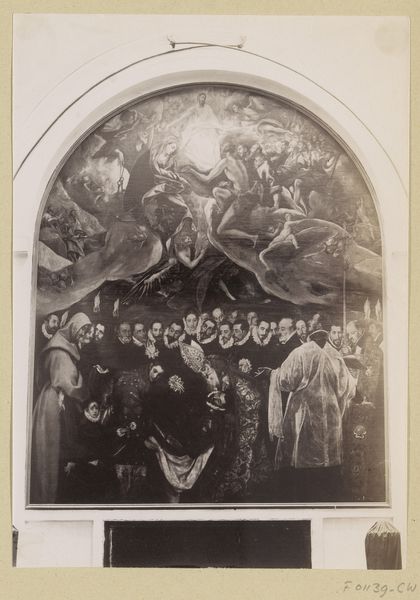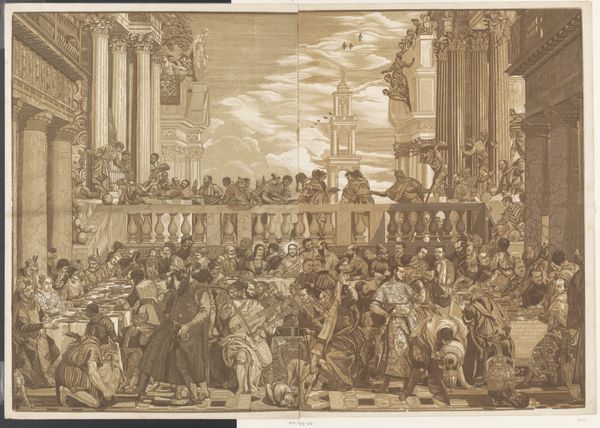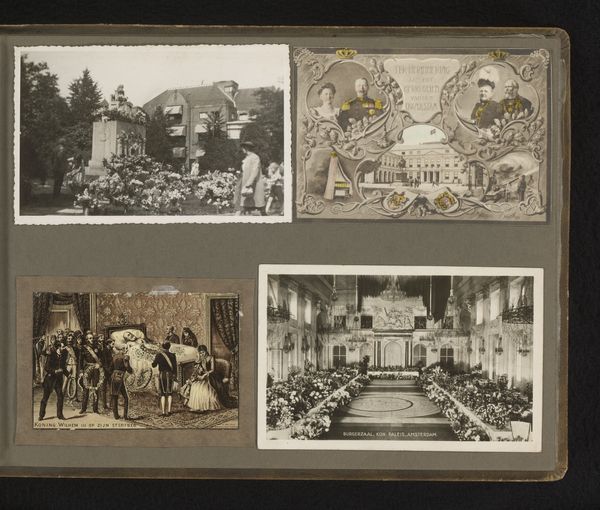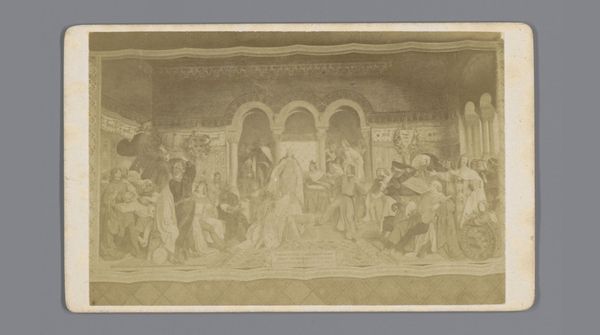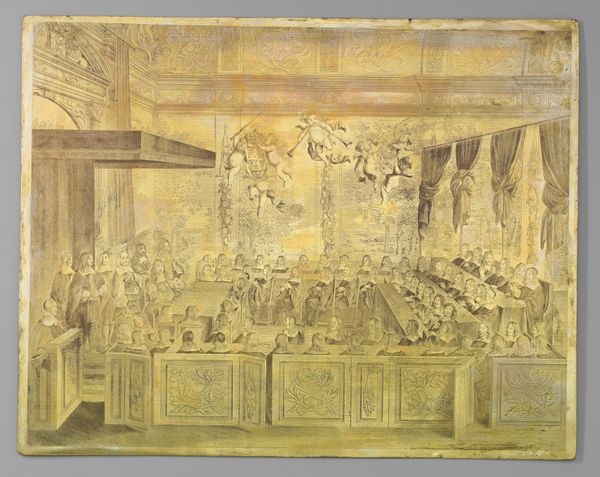
painting, print, etching, mural
#
painting
# print
#
etching
#
charcoal drawing
#
history-painting
#
mural
Dimensions: height 296 mm, width 391 mm
Copyright: Rijks Museum: Open Domain
Curator: Before us is a print called "Zaal in het oude gerechtsgebouw te Middelburg," placing it in a specific location, an old courthouse in Middelburg. Johann Baptist Obernetter created this between 1867 and 1887, during a time when historical painting and depictions of civic spaces were quite popular. Editor: My immediate reaction is a feeling of overwhelming density. So many figures packed into one space, a veritable visual feast. It feels staged, though. Almost like actors on a set waiting for their cue. Curator: That density speaks to the historical narratives often presented in such settings. The space, as a site of justice and power, is imbued with representations of past triumphs and authority. We have to think about whose narratives are privileged in these monumental works and whose are obscured. It's easy to see a triumphal scene on the surface. The central, elevated figure, perhaps a returning hero or conqueror. But there are the burdened figures struggling forward. The composition seems almost deliberately contradictory. Editor: I agree, there is something staged, something carefully posed, as though meant to impress upon the viewers in the courthouse certain values. But what I find interesting is the symbolic clash—light and shadow, order and chaos. The angels are blowing trumpets which symbolize triumph, yes, but that city burning in the background introduces a darkness. Curator: Yes, the angels of triumph over a scene of potential subjugation…we need to question that assumed superiority. What sociopolitical climate would encourage such a visual statement and for what purpose? Whose idea of 'justice' is being served? The use of a public space to advance narratives of power and legitimacy demands examination of intersectional issues. Editor: Absolutely. I can't help but feel the enduring impact of these kinds of images on the subconscious mind. Consider that a courtroom setting already heavily layered with symbolism. Curator: Exactly! From gendered stereotypes in justice scales, to historical paintings…it all creates a sense of pre-ordained roles. This invites us to confront the power dynamics ingrained within even supposedly neutral settings. The artist uses etching and the black and white palette makes a very powerful statement in its own right! Editor: Considering the symbols presented here and the architecture around the piece, it shows that it must carry emotional, cultural, and psychological weight to those who have seen it within the courthouse and those who get a chance to view it today. Curator: Precisely, and situating artwork in time lets us recognize the continuity of visual storytelling within a system, while acknowledging progress for creating equality and equity!
Comments
No comments
Be the first to comment and join the conversation on the ultimate creative platform.
